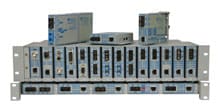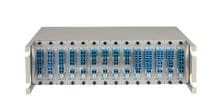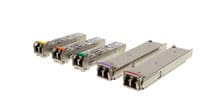- Products
- PoE Media Converters and Switches
- Ethernet & PoE Switches Product Selector
- Multi-Gigabit Ethernet and PoE Switches
- PoE PSE Commercial Switches
- PoE PSE Industrial Fiber Switches
- PoE Industrial Copper Extenders
- PoE Powered Media Converters
- PoE PSE Media Converters
- PoE Extenders & Injectors Product Selector
- Pluggable Transceivers Product Selector
- Product Lines
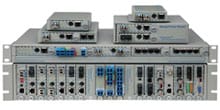
- iConverter Managed Multi-service Platform
- Copper to Fiber Media Converters
- Ethernet Media Converters
- 10 Gigabit Copper-to-Fiber
- 10/100/1000 Copper to 10 Gigabit Fiber
- 10/100/1000 Copper-to-Fiber with Integrated Management
- 10/100/1000 Industrial Copper-to-Fiber with Integrated Management
- 10/100/1000 Copper-to-Fiber with VLAN
- 10/100/1000 Dual Media Converter with VLAN
- Gigabit Copper-to-Fiber
- 10/100 Copper-to-Fiber with Integrated Management
- 10/100 Industrial Copper-to-Fiber with Integrated Management
- 10/100 Copper-to-Fiber with VLAN
- 10/100 Copper-to-Fiber
- Fast Ethernet Copper-to-Fiber
- Fast Ethernet Redundant Links
- 10Mbps Copper-to-Fiber
- 10Mbps Copper to Coax
- TDM Media Converters
- Serial Media Converters
- Ethernet Media Converters
- Fiber to Fiber Media Converters
- 10 Gigabit Fiber-to-Fiber Converter and Transponder
- 10 Gigabit Industrial Converter and Transponder
- SFP-to-SFP Fiber Converter and Transponder
- SFP-to-SFP Industrial Fiber Converter and Transponder
- Gigabit Fiber to-Fiber with 3 Rs
- 100/1000 Fiber-to-Fiber with 3 Rs
- Gigabit Fiber-to-Fiber
- Fast Ethernet Fiber-to-Fiber with 3 Rs
- Fast Ethernet Fiber-to-Fiber
- OC-3/STM-1 Fiber-to-Fiber
- OC-12/STM-4 Fiber-to-Fiber
- Carrier Ethernet Network Interface Devices
- CE 2.0 - 10G Demarcation NID
- CE 2.0 - 10G Demarcation and Aggregation NID
- CE 2.0 - 10/100/1000 Mult-port NID
- CE 2.0 - 10/100/1000 Mult-port NID with PoE
- CE 2.0 - 10/100/1000 8-Port NID
- SFP NID - Gigabit SFP NID
- microNID - 100/1000 compact NID
- CE 1.0 Service OAM - 10/100/1000 NID
- CE 1.0 Link OAM - 10/100/1000 Copper-to-Fiber NID
- CE 1.0 Link OAM - 10/100 Copper-to-Fiber NID
- CE 1.0 Link OAM - Gigabit Fiber-to-Fiber NID
- CE 1.0 Link OAM - Fast Ethernet Fiber-to-Fiber NID
- CWDM Multiplexers
- T1/E1 Multiplexers
- Ethernet Switch Modules
- Management System
- Chassis Options

- 1-Module Industrial Chassis
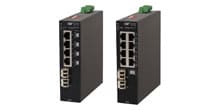
- RuggedNet Industrial Switches and Extenders
- Industrial PoE PSE Fiber Switches
- Multi-Gigabit Managed Industrial PoE+/BT Switches
- Multi-Gigabit Unmanaged Industrial PoE+/BT Switches
- 10G Managed 802.3bt PoE Switches
- 10G Unmanaged 802.3bt PoE Switches
- 10G Managed PoE+ Switches
- 10G Unmanaged PoE+ Switches
- 1G Managed PoE+ Switches
- 1G Unmanaged PoE+ Switches
- 1G Unmanaged 802.3bt PoE Switches
- 1G Managed 802.3bt PoE Switches
- Industrial Ethernet Switches
- Industrial PoE Copper Extenders
- Industrial Power Supplies

- OmniConverter Media Converter, Switches and Extenders
- PoE PSE Media Converters
- 10G Multi-Gigabit / Multi-Rate PoE Media Converter
- 10G Multi-Gigabit / Multi-Rate Media Converter
- 10/100 Multi-port PoE+ Media Converter
- 10/100 PoE+ Media Converter
- 10/100/1000 Multi-Port PoE+ Media Converter
- Industrial 10/100/1000 Multi-Port PoE+ Media Converter
- 10/100/1000 PoE+ Media Converter
- 10/100/1000 PoE++ 60W-100W Media Converter
- Industrial 10/100 Multi-port PoE+ Media Converter
- 1U Rack-Mount Shelf
- PoE PSE Compact Switches
- Multi-Gigabit Managed PoE+/BT Switches
- Multi-Gigabit Unmanaged PoE+/BT Switches
- 10G Managed 802.3bt PoE Switches
- 10G Unmanaged 802.3bt PoE Switches
- 10G Managed PoE+ Switches
- 10G Unmanaged PoE+ Switches
- 1G Managed PoE+ Switches
- 1G Unmanaged PoE+ Switches
- 1G Managed 802.3bt PoE Switches
- 1G Unmanaged 802.3bt PoE Switches
- Ethernet Switches
- PoE Copper Extenders
- Single Pair Ethernet Converters
- PoE Injectors
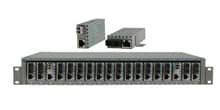
- miConverter Unmanaged Miniature Media Converters
- 10/100/1000 Copper-to-Fiber
- Industrial 10/100/1000 Copper-to-Fiber
- 10/100/1000 Ultra-Compact Copper-to-Fiber
- Gigabit Copper-to-Fiber
- 10/100/1000 Copper-to-Fiber PoE Powered
- 10/100 Copper-to-Fiber
- 10/100 Ultra-Compact Copper-to-Fiber
- 10/100 Copper-to-Fiber PoE Powered
- 18-Module Chassis
- Industrial 10/100 Copper-to-Fiber PoE Powered
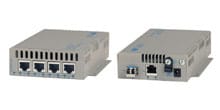
- FlexSwitch Compact Switches
- Solutions
- Company
- Support
- How to Buy
Building a Future-Proof Network Infrastructure for Industrial Applications

The industrial sector is undergoing a digital revolution. The rise of Industrial IoT (IIoT), cloud computing, and advanced automation is driving the need for robust, high-performance network infrastructures. But with technology constantly evolving, how can you ensure your industrial network is ready for whatever the future holds?
Here at Omnitron Systems, we understand the challenges of building a future-proof network. In this blog, we'll explore key considerations and strategies to create a network infrastructure that can support your industrial applications today and well into the future.
Factors Driving Network Demands:
-
IIoT Integration:
The ever-increasing number of connected devices – sensors, machines, and robots – generates massive amounts of data. Your network must handle this data efficiently to support real-time monitoring and control.
-
Bandwidth-Intensive Applications:
High-definition video surveillance, machine vision and learning, industrial automation, remote monitoring and control are becoming commonplace in industrial settings. These applications require significant bandwidth to function smoothly.
-
Evolving Technologies:
New technologies like 5G and Time-Sensitive Networking (TSN) promise to revolutionize industrial communication. Your network should be adaptable to integrate these advancements seamlessly.
Wi-Fi 6 (802.11ax) offers increased capacity and efficiency compared to previous standards. The Wi-Fi 6E adds access to the 6 GHz band, providing even more channels for data transmission and reducing congestion in dense environments. We can expect future iterations of Wi-Fi (like Wi-Fi 7) to build upon these improvements for even faster speeds and better handling of multiple devices.
Building a Future-Proof Network:
-
Scalability:
Design your network with future expansion in mind. Choose network equipment that can easily accommodate additional devices and applications as your needs grow. Omnitron offers a wide range of scalable switches with modular designs to adapt to changing demands.
-
High Bandwidth Capacity:
Make an investment in a network infrastructure that can support industrial applications' ever-growing bandwidth needs. Consider deploying fiber optic cabling for its superior performance and immunity to interference. Omnitron provides a variety of high-bandwidth switches and fiber optic solutions to meet your specific requirements.
-
Security:
Industrial networks are increasingly vulnerable to cyberattacks. Implement robust security measures like network segmentation, firewalls, and secure access controls. Omnitron's switches come equipped with advanced security features to safeguard your critical data and infrastructure.
-
Reliability and Redundancy:
Downtime in industrial operations can be extremely costly. Design your network with redundancy in mind. Utilize features like redundant power supplies and multiple network paths to ensure continuous operation in case of failures. Omnitron's industrial-grade switches are built for reliability and offer redundancy options for maximum uptime.
Future Trends in Industrial Network Infrastructure
The industrial world is on the cusp of a transformation driven by data and connectivity. Industrial networks are the backbone of this transformation, and they're evolving rapidly to meet the demands of tomorrow's factories and plants. Here at Omnitron Systems, we're committed to staying ahead of the curve. Let's explore the top key trends shaping the future of industrial network infrastructure:
1. Pervasive Connectivity:
Imagine a future where every device on the factory floor – from sensors and robots to machines and human-machine interfaces (HMI) – is seamlessly connected. This "pervasive connectivity" will unlock a new level of operational efficiency, real-time decision-making, and predictive maintenance. Technologies like Single Pair Ethernet (SPE) and wireless solutions like 5G will play a crucial role in achieving this ubiquitous connectivity.
2. Edge Computing for Real-Time Decisions:
Industrial networks will increasingly leverage edge computing. Edge devices can provide real-time analytics and control choices without depending entirely on centralized cloud computing by processing data closer to its source. This reduces latency, improves responsiveness, and empowers faster troubleshooting and optimization.
3. Time-Sensitive Networking (TSN):
For applications requiring precise synchronization and deterministic communication, TSN is emerging as a game-changer. TSN ensures data packets are delivered within a guaranteed timeframe, which is critical for applications like motion control, robotics, and industrial automation.
4. Industrial IoT (IIoT) Security:
As more devices connect to the network, the attack surface for cyber threats expands. Industrial organizations will need robust security solutions that go beyond traditional IT security measures. Look for network infrastructure solutions with built-in security features like access controls, encryption, and vulnerability management. Omnitron prioritizes security in our switch designs to safeguard your connected industrial assets.
5. Artificial Intelligence (AI) and Machine Learning (ML):
AI and ML are poised to revolutionize industrial operations. Integrating AI and ML models with your network infrastructure will enable features like predictive maintenance, anomaly detection, and automated process optimization. The network needs to be adaptable to handle the increased data flow and support these intelligent applications seamlessly.
FAQs
How to Develop a Network Infrastructure?
To develop a network infrastructure, start by assessing the specific needs of your organization, including data volume, speed, and security requirements. Design the network architecture, selecting appropriate hardware and software components. Implement the network by installing and configuring equipment, ensuring robust security measures are in place. Finally, test the network thoroughly, document the setup, and provide training and support to your staff.
How Can Network Infrastructure Be Improved?
Improving network infrastructure can be achieved by upgrading outdated hardware to enhance performance and reliability. Optimize the network design to ensure efficient data flow and eliminate bottlenecks. Implement advanced security measures and increase bandwidth to handle higher data volumes. Regularly train IT staff and utilize network management tools to monitor and optimize the network.
What is Network Design Management?
Network design management involves planning, designing, implementing, and managing a network to meet organizational needs. It includes selecting the right topology, hardware, and security measures to ensure optimal performance and scalability. Ongoing management includes monitoring, troubleshooting, and maintaining the network, along with documenting all configurations and policies. Regular evaluation and updates are essential to incorporate new technologies and adapt to changing requirements.
Omnitron Systems: Your Partner in Building a Future-Proof Network
By incorporating these strategies and partnering with Omnitron Systems, you can build a network infrastructure that is:
- Scalable: Adapts to accommodate future growth and evolving technologies.
- High-performance: Handles demanding applications and large data flows efficiently.
- Secure: Protects your critical data and infrastructure from cyber threats.
- Reliable: Minimizes downtime and ensures continuous operation.
Contact Omnitron Systems today to discuss your specific requirements and explore our comprehensive range of future-proof networking solutions designed to empower your industrial applications for years to come.
Omnitron Systems product specialists collaborate extensively with end-users, integrators, and channel partners to pinpoint and suggest the most cost-effective solutions for new network designs and upgrades to existing networks. Schedule a Free Network Design Session

